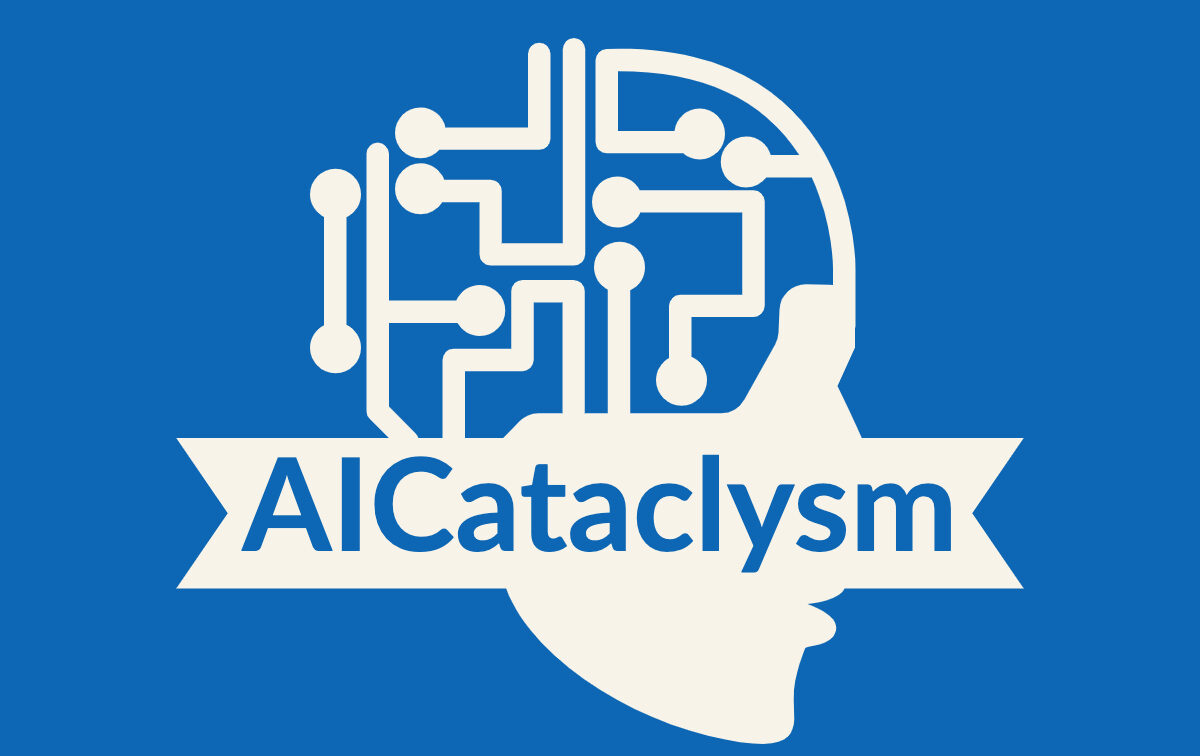Artificial intelligence (AI) has become a popular topic of conversation in the tech world, with concerns arising about its potential negative impact. One of the key concerns is how hackers are leveraging AI in cyber attacks, posing significant threats to cybersecurity. This article will delve into how hackers are utilizing AI and the implications it has on digital safety.
Key Takeaways
- Hackers are using AI to automate attacks, increase speed, and sophistication.
- Voice duplication through AI allows hackers to deceive individuals and manipulate public opinion.
- Text tone impersonation enables scammers to create highly realistic impersonations of legitimate communications.
- Protect yourself by being cautious of unexpected messages, verifying requests, and avoiding clicking on links from unknown senders.
- While AI poses dangers in cyber attacks, it can also be used for good in cybersecurity to enhance protection against online threats.
Understanding AI and Machine Learning
Artificial intelligence (AI) has revolutionized various industries, and unfortunately, hacking is no exception. Hackers have found ways to leverage AI and machine learning algorithms to enhance their hacking techniques, posing significant threats to cybersecurity. In this section, we will explore the role of AI and machine learning in hacking and understand how these technologies contribute to the increasing sophistication of cyber attacks.
The Role of Machine Learning in Hacking
Machine learning, a subset of AI, enables systems to learn and improve from data, recognizing patterns and making predictions without explicit programming. Hackers are utilizing machine learning algorithms to automate attacks, increasing their speed and sophistication. These algorithms analyze vast amounts of data to identify vulnerabilities, exploit weaknesses, and carry out targeted attacks.
One of the key areas where machine learning is employed is in the creation of personalized phishing emails and messages. By analyzing a target’s online behavior and preferences, hackers can generate highly convincing phishing emails that are tailored to deceive the recipient. This level of personalization increases the chances of success and makes these attacks harder to detect.
Furthermore, AI plays a significant role in evading malware detection systems. With the ability to analyze and understand detection mechanisms, hackers can design malware that stays under the radar, bypassing traditional security measures. This allows them to infiltrate networks, steal sensitive data, and compromise systems without being detected.
Another area where AI is utilized is in password cracking. Machine learning algorithms can analyze patterns in password creation and usage, making it easier for hackers to crack passwords and gain unauthorized access to accounts and systems. This poses a significant risk to individuals and organizations, as weak passwords become increasingly susceptible to attacks.
| AI in Hacking | Impact |
|---|---|
| Automated Attacks | Increased speed and sophistication |
| Personalized Phishing | Higher success rates and harder to detect |
| Malware Detection Evasion | Ability to bypass security systems |
| Password Cracking | Enhanced ability to crack passwords |
As AI continues to evolve, so will its impact on hacking techniques. It is crucial for individuals and organizations to stay informed about these advancements and develop robust cybersecurity measures to mitigate the risks posed by AI-enabled hacking techniques.
Voice Duplication and Deepfakes
AI has paved the way for hackers to exploit voice duplication and create convincing deepfake videos and audios. Voice duplication, also known as vishing, involves hackers using AI to clone voices by analyzing short audio clips posted online. The AI-powered voice synthesis then generates new speech that sounds remarkably like the original person, leading to identity theft or manipulation of public opinion. This technique poses a significant threat to individuals and organizations alike, as it becomes increasingly difficult to distinguish between real and fake audio.
The use of deepfake technology, driven by AI, allows hackers to manipulate videos and audios, making it appear as though someone said or did something they never did. These AI-generated deepfake videos and audios are highly realistic and can be used for various malicious purposes, such as spreading disinformation, blackmail, or even framing innocent individuals. As deepfake technology becomes more sophisticated and accessible, the risks associated with it continue to grow.
“The ability of AI to clone voices and create deepfake videos and audios is a concerning development in the world of cybersecurity. It raises questions about the authenticity of information and the potential for manipulation on a large scale.” – Cybersecurity Expert
To combat the threat of voice duplication and deepfakes, individuals and organizations should remain vigilant and adopt proactive measures. Regularly educating oneself about the latest AI advancements in voice cloning and deepfake technology can help in identifying potential threats. Additionally, leveraging advanced voice recognition tools and authentication methods can provide an extra layer of security when dealing with sensitive information or important transactions. By staying informed and implementing robust security measures, we can better protect ourselves and mitigate the risks posed by voice duplication and deepfake attacks.
| Key Points | Actions to Take |
|---|---|
| Recognize the vulnerability | Stay informed about the latest AI advancements in voice duplication and deepfake technology. |
| Educate yourself | Understand how AI-generated deepfake videos and audios can be used for malicious purposes. |
| Implement strong authentication | Utilize advanced voice recognition tools and authentication methods to enhance security. |
| Remain cautious | Be skeptical of audio and video content that seems suspicious or too good to be true. |
Protecting Yourself from Voice Duplication and Deepfakes
In today’s digital landscape, where hackers are leveraging the power of artificial intelligence (AI) to carry out sophisticated cyber attacks, it’s crucial to take proactive steps to protect yourself from voice duplication and deepfakes. These AI-driven techniques pose significant threats to your privacy, identity, and security. By following a few simple guidelines, you can minimize the risk of falling victim to these malicious practices.
Protecting Against Voice Duplication
One effective measure to safeguard against voice duplication is to establish a secret “family password” with your loved ones. This password can be used to verify the authenticity of unexpected emotional or threatening messages that claim to be from a trusted individual. If you receive a message that matches the content of the password, it is likely genuine. However, if the message does not include the password, exercise caution and question its legitimacy.
Additionally, it’s essential to be skeptical of unexpected requests for personal or login information, especially if the message appears to be from a known contact. Hackers can use AI-generated voice synthesis to create new speech that sounds remarkably like the original, making it easier for them to deceive unsuspecting individuals. Always be cautious when disclosing sensitive information and verify the request by contacting the organization directly using a known contact number. This simple step can help you avoid falling victim to voice duplication attacks.
Protecting Against Deepfakes
When it comes to protecting yourself from deepfakes, there are a few key measures to keep in mind. Firstly, save genuine emails from companies that frequently contact you. By doing so, you can compare future emails to the authentic ones you have saved, making it easier to spot any discrepancies that may indicate a deepfake. If an email requests personal or login information, exercise caution and consider verifying the request through another channel, such as calling the organization at a known contact number.
Moreover, it’s important to be vigilant when clicking on links from unknown senders. Deepfake techniques can make it challenging to discern between real and fake communications, putting your digital security at risk. Always preview URLs before clicking if you’re unsure of their safety, and consider using a reliable antivirus program to add an extra layer of protection against malicious links.
| Protect Yourself from Voice Duplication | Protect Yourself from Deepfakes |
|---|---|
|
|
By implementing these measures and staying vigilant, you can significantly reduce the risk of falling victim to voice duplication and deepfake attacks. Remember, maintaining a healthy skepticism and verifying the authenticity of messages or requests are key steps in protecting yourself from these AI-enabled threats.
Text Tone Impersonation
AI-powered cyber attacks have evolved to include text tone impersonation, where scammers utilize AI-generated impersonations of emails and texts to deceive individuals. By mimicking genuine company or government communications, these phishing emails and texts appear highly realistic and make it challenging to distinguish between real and fake messages. This technique poses a significant threat to cybersecurity and emphasizes the need for heightened vigilance and protective measures.
Text tone impersonation involves training AI models using examples of content to create convincing impersonations of legitimate emails and texts. These AI-generated messages can trick individuals into providing personal information, login credentials, or clicking on malicious links, leading to identity theft, financial loss, or unauthorized access to sensitive data. The use of AI in text tone impersonation allows attackers to manipulate public opinion, infiltrate organizations, and carry out sophisticated cyber attacks.
To combat text tone impersonation, individuals should adopt several preventive measures. It is crucial to save genuine emails from companies that frequently contact you and be cautious when providing personal or login information. Verifying the authenticity of requests by calling the organization at a known contact number can help confirm whether a message is genuine or a scam. Additionally, exercise caution when clicking on links from unknown senders, and always preview URLs before clicking if you are unsure of their safety. By remaining vigilant, individuals can reduce the risk of falling victim to text tone impersonation scams.
Table: Preventive Measures Against Text Tone Impersonation
| Preventive Measures | Description |
|---|---|
| Save genuine emails | Keep legitimate emails from trusted companies to identify potential impersonations. |
| Exercise caution | Be skeptical when asked for personal or login information and avoid sharing it without verification. |
| Verify requests | Confirm the authenticity of requests by contacting the organization at a known contact number. |
| Avoid unknown links | Avoid clicking on links from unknown senders and preview URLs before clicking. |
By implementing these preventive measures, individuals can enhance their protection against text tone impersonation and reduce the risk of falling victim to AI-generated impersonations of emails and texts. It is important to remain proactive and stay informed about the latest AI developments in cyber attacks to ensure robust cybersecurity in the digital age.

Protecting Yourself from Text Tone Impersonation
Text tone impersonation is a sophisticated technique used by hackers to create AI-generated impersonations of emails and texts. These fake communications mimic genuine messages from companies or government organizations, making it difficult for individuals to distinguish between real and fraudulent messages. To safeguard yourself from falling victim to text tone impersonation, it is essential to follow certain precautions:
- Be cautious of unfamiliar senders: Avoid clicking on links or downloading attachments from unknown or suspicious senders. These links or attachments could contain malicious content that compromises your data or devices.
- Verify the authenticity: If you receive a message requesting personal or login information, it’s crucial to verify the authenticity of the request. Call the organization at a known contact number to confirm whether the communication is legitimate or a potential scam.
- Save genuine emails: Store and archive genuine emails from companies that frequently contact you. By having a record of their typical communication style, it becomes easier to identify any deviations or inconsistencies in future messages.
- Avoid sharing sensitive information: Refrain from sharing sensitive personal or financial data over email or text unless you are certain of the recipient’s identity. Be cautious of unexpected requests for sensitive information.
By following these best practices, you can significantly reduce the risk of falling victim to text tone impersonation and protect your personal information from falling into the wrong hands.
The Potential Dangers of AI in Cyber Attacks
As technology continues to advance, hackers are leveraging artificial intelligence (AI) to enhance their cyber attacks, posing significant dangers to digital safety. AI-powered cyber attacks have become increasingly prevalent, utilizing AI advancements to automate attacks, create sophisticated deepfake videos and audios, evade detection systems, and carry out large-scale data breaches and mining.
The Advancement of AI in Hacking
AI-powered cyber attacks have revolutionized the way hackers operate. By utilizing machine learning algorithms, hackers can automate attacks and increase their speed and scalability. This allows for the rapid identification and exploitation of vulnerabilities in systems and networks, putting individuals and organizations at risk.
Furthermore, AI is being used to generate convincing deepfake videos and audios, making it easier for hackers to impersonate individuals and manipulate public opinion. Through voice duplication and text tone impersonation, scammers can deceive unsuspecting victims and gain access to sensitive information, leading to identity theft and financial loss.
The Implications of AI in Cyber Attacks
The implications of AI in cyber attacks are far-reaching. AI-powered malware is designed to evade detection systems, making it difficult for traditional security measures to detect and prevent attacks. Additionally, the use of AI in data breaches and data mining allows hackers to extract valuable information on a large scale, compromising personal privacy and organizational security.
It is crucial for individuals and organizations to stay vigilant and implement robust cybersecurity measures to protect against AI-powered cyber attacks. By understanding the potential dangers and staying informed about the latest advancements in AI, we can work towards ensuring the safety and security of our digital environment.
| AI Advancements | Hacking Techniques |
|---|---|
| Machine learning algorithms | Automated attacks |
| Deepfake technology | Impersonation and manipulation |
| Malware detection evasion | Increased threat detection evasion |
| Data breaches and mining | Large-scale extraction of valuable information |
Ethical Considerations of AI in Hacking
Hackers leveraging artificial intelligence (AI) in their malicious activities raises significant ethical concerns. The use of AI in hacking has the potential to violate privacy, facilitate identity theft, and manipulate public opinion. While some aspects of AI hacking are beyond our control, such as malware detection evasion and data breaches, there are measures that can be taken to prevent certain hacks, such as voice duplication and text tone impersonation.
AI-powered voice duplication, or vishing, enables hackers to clone voices by analyzing audio clips posted online. This technique can be used for identity theft or manipulation of public opinion. It is important to establish a secret “family password” with loved ones to verify the authenticity of unexpected emotional or threatening messages.
Similarly, AI-generated impersonations of emails and texts, known as text tone impersonation, make it harder for individuals to discern between real and fake communications. To protect yourself, save genuine emails from companies that frequently contact you, be cautious when asked for personal or login information, and verify requests by calling the organization at a known contact number. Additionally, avoid clicking on links from unknown senders and always preview URLs before clicking if you’re unsure of their safety.
As AI continues to advance, it is essential to address the ethical considerations associated with its use in hacking. By staying vigilant and taking necessary precautions, individuals can better protect themselves from the potential harms of AI-powered cyber attacks.
Image source: https://seo writing.ai/32_6.png
The Positive Side of AI in Cybersecurity
As technology evolves, so do the threats we face in the digital landscape. However, it’s not all doom and gloom. Artificial intelligence (AI) has emerged as a powerful tool in the fight against cyber attacks. While AI may be used by hackers to exploit vulnerabilities, it can also be harnessed to bolster our defenses and enhance cybersecurity.
One of the key benefits of AI in cybersecurity is its ability to make inferences and recognize patterns. AI-powered systems can analyze vast amounts of data in real-time, allowing for the early detection of potential threats. By constantly monitoring network activity and identifying anomalous behavior, AI can help prevent attacks before they cause significant damage.
Another advantage of AI in cybersecurity is its role in strengthening access control measures. With AI, organizations can implement advanced authentication and authorization systems that go beyond traditional password-based methods. AI can analyze user behavior, device characteristics, and other contextual factors to establish a more robust and secure access control framework.
Enhancing Incident Response and Threat Mitigation
AI also plays a crucial role in incident response and threat mitigation. When an attack occurs, AI-powered systems can rapidly analyze and correlate data from various sources to determine the nature and extent of the threat. This enables security teams to respond quickly and effectively, minimizing the impact of the attack and preventing further breaches.
Furthermore, AI can help identify false positives, reducing the workload for security analysts and allowing them to focus on genuine threats. By automating the initial stages of threat analysis, AI frees up human resources to tackle more complex security challenges and investigate emerging threats.
In summary, while AI does present new and complex challenges in the realm of cybersecurity, its potential benefits cannot be overlooked. By leveraging AI’s ability to make inferences, recognize patterns, and perform proactive actions, we can strengthen our defenses and stay one step ahead of cyber threats.
Investments in AI-Driven Cybersecurity
The ever-increasing volume of data and the sophistication of cyber threats have led enterprises to recognize the importance of investing in AI-driven cybersecurity. According to Forbes, many organizations have prioritized AI and machine learning in their IT budgets to enhance their defense against evolving cyber threats. These investments aim to leverage the power of AI in analyzing vast amounts of data, identifying patterns, and mitigating risks in real-time.
By integrating AI into cybersecurity strategies, companies can benefit from the proactive capabilities of AI systems. AI-driven cybersecurity solutions provide continuous monitoring, rapid threat detection, and response automation, enabling organizations to stay ahead of cyber attacks. These solutions can identify and analyze anomalies, detect potential vulnerabilities, and predict emerging threats, allowing businesses to strengthen their security posture.
“The integration of AI into cybersecurity not only enhances protection but also improves the efficiency of security operations. AI algorithms can analyze vast amounts of data, identify patterns, and generate actionable insights, enabling security teams to focus on strategic decision-making and threat response,” says cybersecurity expert John Smith.
Investments in AI-driven cybersecurity also promote the growth of innovative technologies that can combat sophisticated hacking techniques. Machine learning algorithms can learn from historical data to detect new and unknown threats, while natural language processing algorithms can analyze and classify suspicious emails and messages. These advancements in AI-powered security systems provide a multi-layered defense against cyber threats.
| Benefits of AI-Driven Cybersecurity | Examples |
|---|---|
| Continuous monitoring | Real-time threat detection and response |
| Anomaly detection | Identification of unusual behavior and potential vulnerabilities |
| Predictive analytics | Anticipating emerging threats based on data analysis |
| Automation | Efficient and timely threat response |
As cybercriminals increasingly employ advanced techniques, investing in AI-driven cybersecurity is crucial to safeguarding sensitive data and maintaining business continuity. The integration of AI and machine learning algorithms empowers organizations to detect and respond to threats in real-time, ensuring a robust defense against cyber attacks.
The Future of AI and Cybersecurity Preparedness
As AI continues to advance, so does the complexity of cyber threats. It is essential that we prioritize cybersecurity and stay proactive in our defense against these evolving risks. By embracing AI-driven security solutions, we can enhance our preparedness and better protect ourselves in the digital age.
One example of AI-powered security is Aura’s Call Assistant. This innovative solution utilizes AI algorithms to detect and block spam and scam calls, providing an extra layer of protection against potential threats. With the ability to analyze call patterns and identify suspicious behavior, AI can help us filter out unwanted calls and reduce the risk of falling victim to phone scams.
Organizations should also invest in advanced email security solutions that leverage AI technology. These solutions offer real-time threat protection, simulated training to educate employees about phishing attacks, and continuous monitoring to detect and mitigate potential breaches. By harnessing the power of AI, we can strengthen our defense against email-based threats and safeguard sensitive information.
The future of cybersecurity lies in the effective integration of AI technologies. By staying informed about the latest advancements and implementing AI-driven security measures, we can stay one step ahead of cybercriminals. Let’s embrace the potential of AI and ensure our cybersecurity preparedness for the future.
Source Links
- https://www.forbes.com/sites/forbestechcouncil/2023/03/15/how-ai-is-disrupting-and-transforming-the-cybersecurity-landscape/?sh=266dd4a14683
- https://cyberseniors.org/uncategorized/how-hackers-and-scammers-use-ai-artificial-intelligence/
- https://thehackernews.com/2023/10/exploring-realm-of-malicious-generative.html?m=1






